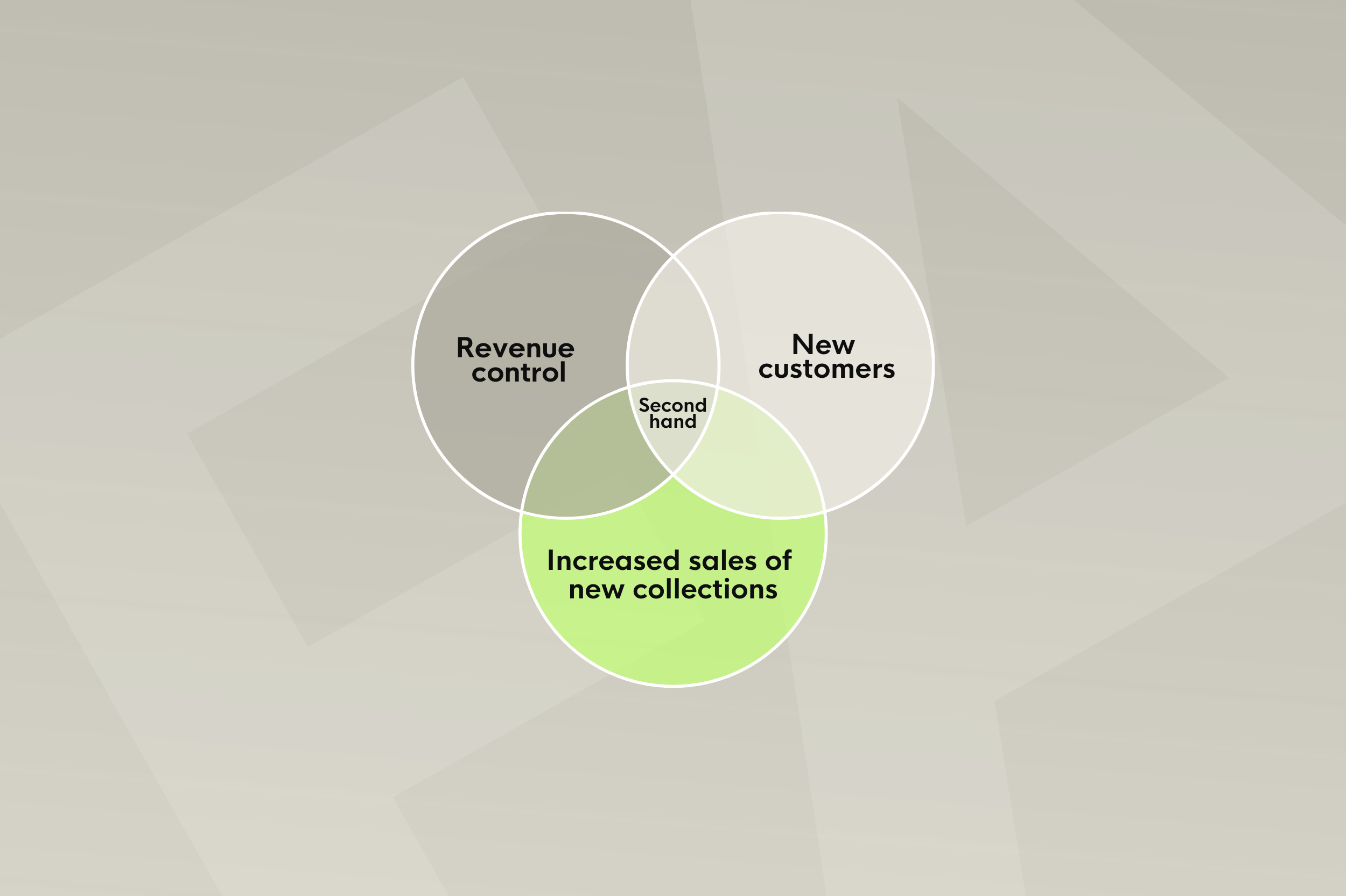Reimagining retail: when circular fashion becomes a driver of desirability

Brands are redefining desirability in the age of sustainability
There was a time when retail relied on a simple equation: novelty + volume + desirability = growth. But that once-powerful formula is losing momentum. The obsession with the next collection, the ever-fuller storefronts, is giving way to a more complex pursuit: longevity. Not just ecological, but also economic and cultural.
In this new landscape, secondhand fashion is no longer an alternative, it’s a strategic necessity. And the most influential brands, from Kering to LVMH, as well as independent houses like ba&sh understand this. The question is no longer should we do it? but how do we do it wisely?
From ownership to circularity: a Nnw definition of luxury
The rules are shifting. What’s now referred to as wardrobe fluidity buying, wearing, reselling, reinvesting is redefining the very notion of ownership. Attachment is no longer measured by how long you keep something, but by how much use and meaning it brings.
Driving this change is a generation of consumers who think in terms of both style and impact. According to ThredUp, the global secondhand market is projected to reach $350 billion by 2030, fueled by a growing demand for transparency, individuality, and accountability.
And for brands? It's a field of opportunity. Failing to structure their secondary market means leaving others to capture the emotional, cultural, and financial value of their own creations.
Resale as a catalyst for Desirability
The myth that secondhand dilutes brand value is over. Today, it enhances it. Fashion houses have come to understand: just because a garment changes hands doesn't mean it loses its symbolic power. On the contrary.
At ba&sh, that intuition has become a conviction. In less than two years, the brand has opened five Parisian pop-ups entirely dedicated to secondhand. The latest, in the heart of the Marais, welcomed customers with a clear message: “Take back, trade in, reinvest.”
The outcome? Secondhand already represents 5% of the brand’s revenue in France over one million euros.
The program, deployed in partnership with Faume, follows a seamless logic: trade-ins for store credit, immediate resale, integration across stores, website, and app. It works because it’s designed to be desirable—because it doesn’t compete with new collections, but extends their value.
Physical retail: from point of sale to circular hub
In a world where 73% of shoppers now expect an in-store experience (IFM Panel, 2023), secondhand has become a driver of foot traffic, loyalty and above all, emotional connection.
Once again, ba&sh offers a compelling example: in its pop-up stores, every item dropped off is rewarded with an instant voucher, valid on current collections. This system developed with Faume not only generates revenue, it forges a bond. Every trade-in becomes an act of loyalty, every resale a shared commitment.
More broadly, this model lays the foundation for a re-enchanted retail experience, where the store is no longer just a sales channel, but a space for circularity, interaction, and storytelling.
A response to regulatory and economic pressures
France’s AGEC law now prohibits the destruction of unsold goods. The digital product passport is on its way. ESG criteria are increasingly driving investor decisions. Times are changing and business models must evolve accordingly.
But once again, secondhand isn’t just a compliance solution. It’s becoming an economic lever. It reduces end-of-season inventory costs, boosts margins through resale, and builds a long-term commercial dynamic.
For a brand like ba&sh, supported by Faume, this is far from a CSR side project it’s a revenue stream. A fully-fledged, scalable, and exportable strategy already rolled out in its key European markets: Germany, Spain, Belgium, and the Netherlands.
Conclusion: circular fashion is no longer a bet it’s a business model
Ten years ago, secondhand was an alternative. Today, it’s a tool. Tomorrow, it will be second nature. ba&sh’s growth proves it: by embedding circularity into its DNA, the brand hasn’t just met customer expectations it’s taken a decisive lead.
In a world where retail must reinvent itself, circular fashion offers a coherent narrative, a profitable model, and an elegant response to the challenges of our time.
At Faume, we support this transformation, alongside brands like ba&sh that have understood one thing: the luxury of tomorrow won’t be measured only in items sold, but in stories extended.
Stay ahead of the game!
Sign up to FAUME's The Secondhand Review newsletter
Read inspiring stories from brands that have successfully launched their secondhand businesses with FAUME







